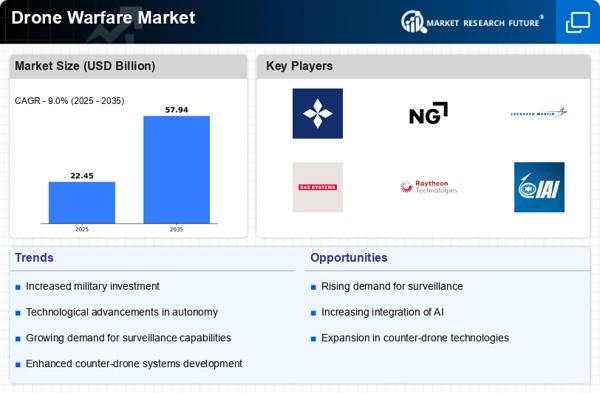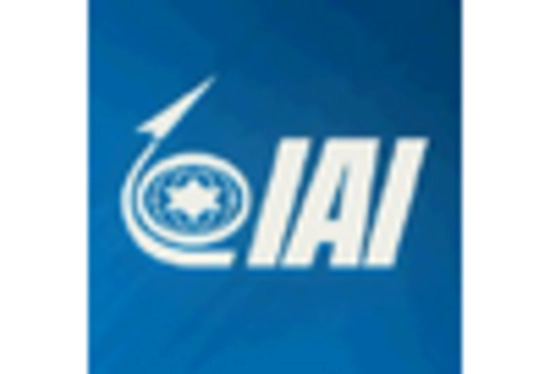Increased Defense Budgets
The Drone Warfare Market is experiencing growth due to increased defense budgets across various nations. Governments are recognizing the strategic advantages offered by drone technology, leading to substantial investments in military capabilities. In 2025, defense spending is anticipated to rise by 10% in several countries, with a significant portion allocated to drone development and procurement. This financial commitment reflects a broader trend of modernization within armed forces, as nations seek to enhance their operational readiness and effectiveness. Consequently, the influx of capital into the drone sector is likely to stimulate market expansion and innovation.
Advancements in Drone Technology
Technological innovations play a pivotal role in shaping the Drone Warfare Market. The integration of artificial intelligence, machine learning, and enhanced sensor technologies has revolutionized drone capabilities. These advancements enable drones to perform complex missions with greater autonomy and precision. For instance, the development of swarming technology allows multiple drones to operate collaboratively, increasing operational efficiency. As of 2025, the market for AI-driven drones is expected to grow by over 20%, indicating a robust demand for cutting-edge technology in military applications. This trend underscores the importance of continuous innovation in maintaining a competitive edge in drone warfare.
Emerging Threats and Geopolitical Tensions
The Drone Warfare Market appears to be significantly influenced by emerging threats and geopolitical tensions. Nations are increasingly facing asymmetric warfare challenges, prompting a shift towards advanced drone technologies. The rise of non-state actors and regional conflicts has led to a heightened demand for unmanned aerial vehicles (UAVs) that can conduct surveillance and precision strikes. In 2025, military budgets allocated for drone technology are projected to increase by approximately 15%, reflecting the urgency to enhance national security capabilities. This trend suggests that countries are prioritizing investments in drone warfare to address evolving threats, thereby driving the market forward.
International Collaboration and Arms Trade
International collaboration and arms trade are shaping the Drone Warfare Market in profound ways. Countries are increasingly engaging in partnerships to develop and share drone technologies, fostering innovation and reducing costs. Additionally, the arms trade in drone systems is expanding, with several nations seeking to acquire advanced UAVs from allies. In 2025, the global arms trade in drones is expected to grow by 12%, reflecting the rising interest in drone warfare capabilities. This collaborative approach not only enhances military capabilities but also drives competition among manufacturers, ultimately benefiting the market as a whole.
Growing Demand for Surveillance and Reconnaissance
The demand for surveillance and reconnaissance capabilities is a key driver of the Drone Warfare Market. As military operations become increasingly complex, the need for real-time intelligence has never been more critical. Drones equipped with advanced imaging and sensing technologies provide unparalleled situational awareness, enabling forces to make informed decisions on the battlefield. In 2025, the market for surveillance drones is projected to account for nearly 40% of total drone sales, highlighting the emphasis on intelligence-gathering capabilities. This trend indicates that militaries are prioritizing the integration of drones into their operational frameworks to enhance strategic planning and execution.


















Leave a Comment